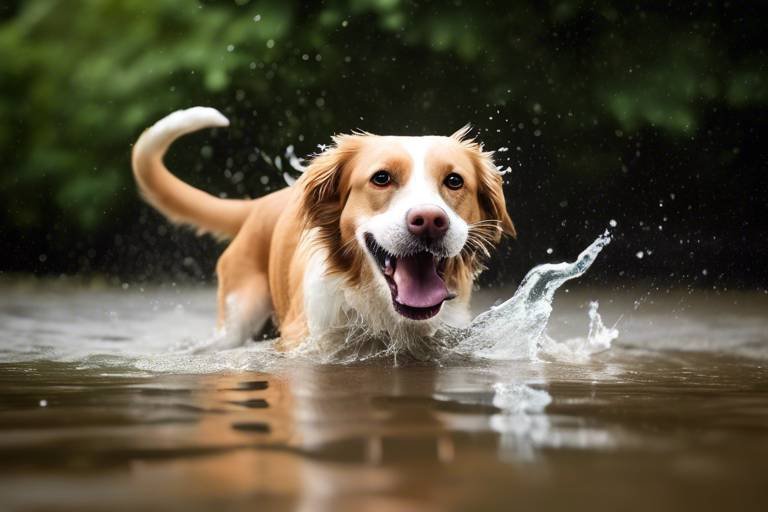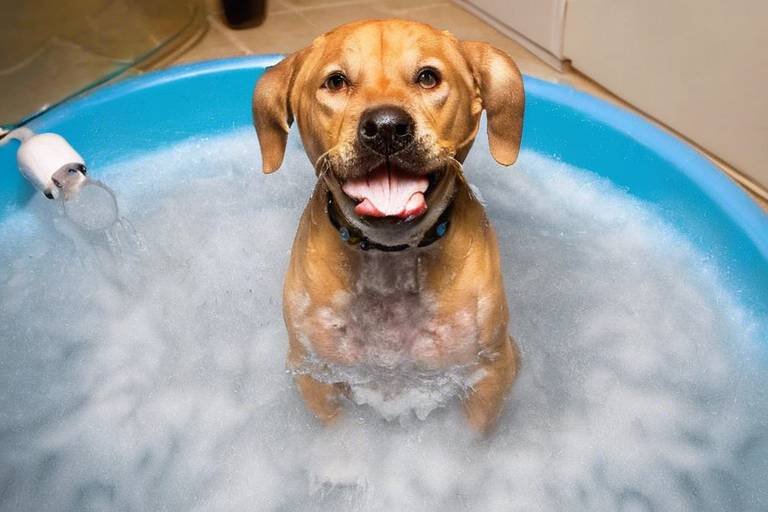How to Help Your Pet Overcome Fear of Water
Having a pet that fears water can be a real challenge, especially if you enjoy activities like swimming, boating, or even just bathing your furry friend. The good news is that with the right approach, you can help your pet overcome this fear. In this article, we will explore effective strategies that not only make water less intimidating for your pet but also create a positive bonding experience for both of you. So, let’s dive in and discover how to help your pet feel safe and comfortable around water!
Before we can help our pets, we need to understand why they might be afraid of water in the first place. Fear of water can stem from various sources, such as a traumatic experience, lack of exposure, or even their breed characteristics. For instance, some dogs, like retrievers, might naturally enjoy water, while others, like bulldogs, may have a harder time. Cats, on the other hand, often have an instinctual aversion to water. Recognizing these differences is crucial. When we empathize with our pets and understand their fears, we can better support them in overcoming these challenges.
One of the most effective ways to help your pet overcome their fear of water is through gradual exposure. This means introducing them to water in small, manageable steps. Start by letting them observe water from a distance, allowing them to get comfortable with the sight and sound. You can then move closer, perhaps splashing a little water with your hands to show that it’s not something to be afraid of. As your pet becomes more relaxed, you can slowly increase their exposure to water, ensuring that each step is positive and not overwhelming.
Building positive associations with water can significantly alleviate fear. Whenever your pet is near water, use treats and praise to reinforce a positive experience. For example, if your dog shows curiosity about a kiddie pool, reward them with a treat or some enthusiastic praise. Over time, they will start to associate water with good things, which can help diminish their fear.
Incorporating toys and games into your water introduction can make the experience fun and engaging. Consider using floating toys or balls that your pet loves. You might even try playing fetch at the edge of a shallow pool or a calm lake. The key is to keep the atmosphere light and playful, which can help distract your pet from their fear and encourage them to explore water in a joyful way.
It’s crucial to introduce water slowly to your pet. Start with shallow water and let them get used to it at their own pace. If your dog is hesitant, you can use a shallow tub at home filled with just a few inches of water. Allow them to step in and out freely without pressure. Gradually, as they become more comfortable, you can increase the depth and even introduce them to larger bodies of water.
Being attentive to your pet’s body language during these water exposure sessions is essential. Look for signs of stress, such as cowering, whining, or trying to escape. Conversely, signs of comfort might include relaxed ears, wagging tails, or playful behavior. If you notice your pet becoming anxious, it’s important to take a step back and allow them to regain their composure before proceeding. This responsiveness will help you tailor your approach to your pet’s comfort level.
The environment where you introduce your pet to water plays a significant role in their comfort level. Opt for calm, quiet locations where your pet won’t be overwhelmed by noise or distractions. Avoid busy beaches or crowded pools at first. Instead, consider a secluded lake or a quiet backyard with a kiddie pool. The goal is to create a safe and inviting atmosphere where your pet can feel secure while exploring this new experience.
Identifying safe water bodies is crucial for positive experiences. Look for locations that are shallow, clean, and free from strong currents. Some ideal options include:
- Calm lakes
- Shallow rivers
- Private pools
- Kiddie pools at home
Home-based water activities can also help your pet acclimate to water. Consider setting up a small kiddie pool in your backyard for your pet to splash around in. You can also fill your bathtub with a few inches of water and let your pet explore it at their own pace. Just remember to supervise them closely to ensure their safety. The more comfortable they become with water at home, the easier it will be to transition to larger bodies of water.
For pets with severe water anxiety, professional assistance may be necessary. If you’ve tried various methods without success, consulting a trainer or behaviorist can provide tailored strategies that suit your pet’s specific needs. These professionals can offer insights and techniques that can help your pet overcome their fears effectively, ensuring a happier and more confident experience around water.
Q: How long will it take for my pet to overcome their fear of water?
A: The time it takes varies by pet. Some may adapt quickly, while others need more time and patience.
Q: Can all pets learn to enjoy water?
A: While many pets can learn to be comfortable around water, some breeds may always have a natural aversion. It’s important to respect their boundaries.
Q: What should I do if my pet shows signs of extreme distress?
A: If your pet is extremely distressed, stop the activity immediately and give them space. Gradual exposure is key, and it’s important to go at your pet's pace.

Understanding the Fear of Water
When it comes to our furry friends, understanding their fears is the first step toward helping them overcome those anxieties. Many pets, whether they're dogs, cats, or even small animals, can develop a fear of water for various reasons. This fear can manifest in different ways, from simple avoidance to outright panic when faced with water. But what causes this fear? Let's dive into some common reasons.
One of the most prevalent causes of water fear in pets is negative past experiences. For instance, if a dog was once caught in a heavy rainstorm or accidentally fell into a body of water, they may associate water with that traumatic event. Similarly, cats, known for their dislike of getting wet, might have had a bad experience during bath time, leading to a lifelong aversion. It’s essential to recognize that these fears are not just quirks; they stem from genuine feelings of discomfort or distress.
Another factor is the instinctual behavior of certain breeds. Some animals are naturally more cautious or anxious, especially breeds that are not known for their swimming ability. For example, a small dog may feel overwhelmed by large bodies of water, while a breed like a Labrador Retriever might take to water more easily. Understanding these instincts can help owners empathize with their pets and tailor their approach accordingly.
Additionally, lack of exposure plays a significant role in a pet's fear of water. If a pet has never been introduced to water in a safe and positive manner, they may view it as a strange and intimidating element. This lack of familiarity can lead to anxiety, as the unknown often breeds fear. It’s crucial to remember that just like us, pets need time to adjust to new experiences.
Finally, the environment where the water exposure occurs can significantly affect how a pet reacts. Loud noises, strong currents, or even the presence of other animals can create a chaotic atmosphere that heightens anxiety. A calm and controlled environment is key to helping your pet feel safe and secure during their journey to overcome their fear.
In summary, understanding the fear of water in pets involves recognizing the various factors at play, including past experiences, instinctual behaviors, lack of exposure, and environmental influences. By being aware of these elements, pet owners can better empathize with their pets and create a supportive environment that encourages positive experiences with water.
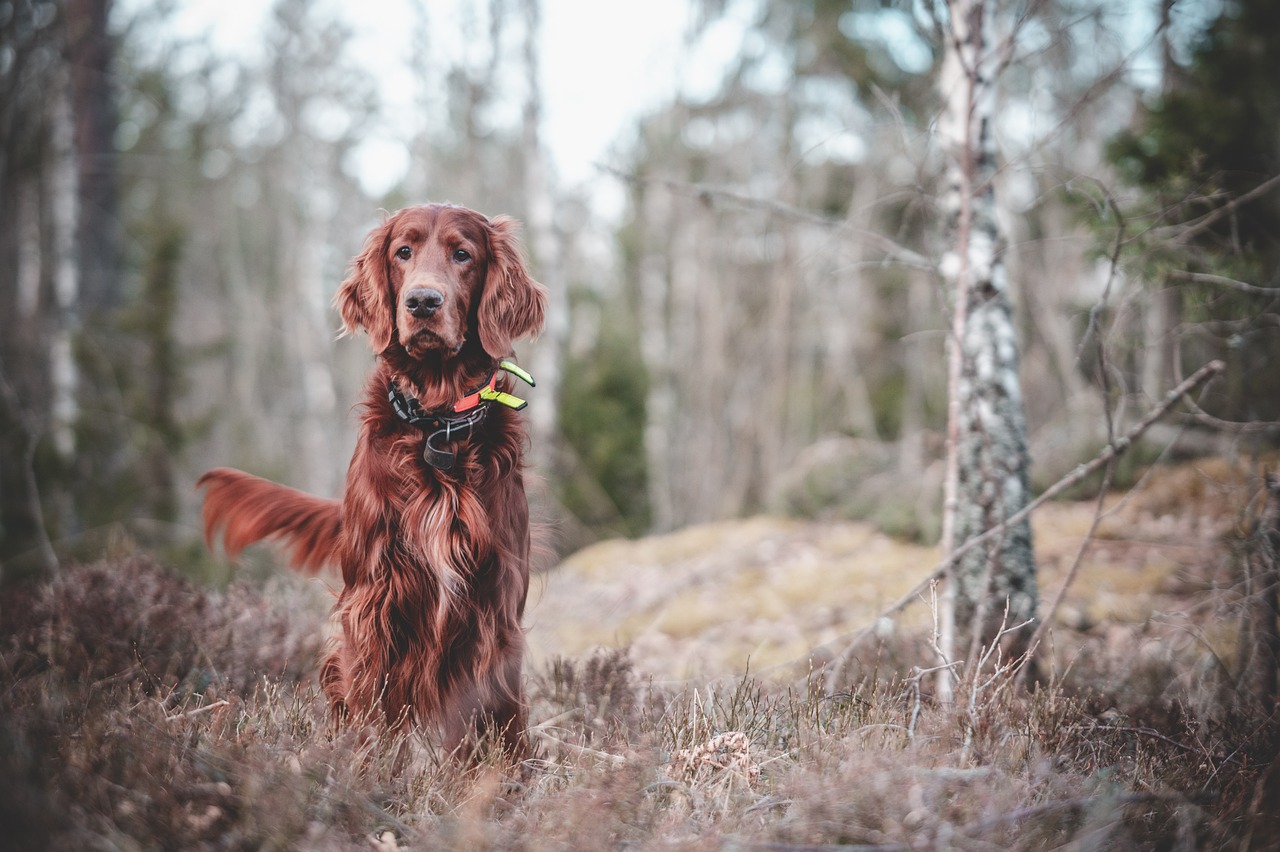
Gradual Exposure Techniques
When it comes to helping your furry friend overcome their fear of water, patience is your best ally. Gradual exposure techniques are all about taking small, manageable steps to introduce your pet to water without overwhelming them. Think of it like teaching a child to swim; you wouldn’t throw them into the deep end right away, would you? Instead, you’d start with shallow water, allowing them to get comfortable at their own pace. This method not only builds confidence but also fosters a sense of safety for your pet.
Start by simply allowing your pet to observe water from a distance. This could be a kiddie pool in your backyard or even a gentle stream. Let them sniff around, explore, and get curious without any pressure. Once they seem relaxed, you can gradually move closer. The key here is to remain calm and encouraging, using a soothing voice to reassure them. If your pet shows signs of stress, such as whining or trying to back away, take a step back and give them time to settle down. Remember, the goal is to create a positive experience!
As your pet becomes more comfortable, you can begin to introduce them to water in a more direct way. Start with just a few inches of water in a shallow container or a small pool. Allow them to step in at their own pace. You might even want to sit beside them, splashing your hands in the water to show that it’s fun and safe. This is where the magic of positive reinforcement comes into play. Every time your pet approaches or interacts with the water, shower them with praise and maybe even a few tasty treats. This will help them associate water with good things, making them more willing to explore.
Incorporating toys into the mix can also be a game changer. You could use floating toys or balls that your pet loves to play with. Tossing a favorite toy into the water can encourage them to retrieve it, turning what was once a scary experience into a fun game. The excitement of chasing after a toy can distract them from their fear and motivate them to engage with the water. Just be sure to monitor their reactions closely. If they seem hesitant, take a step back and allow them to approach the toy on their own terms.
In summary, gradual exposure techniques can be incredibly effective in helping your pet overcome their fear of water. By starting slow, using positive reinforcement, and incorporating play, you can create a safe and enjoyable environment that encourages your pet to embrace water rather than fear it. Remember, every pet is unique, so be flexible in your approach and celebrate the small victories along the way!
- How long does it take for a pet to overcome their fear of water?
Every pet is different. Some may take only a few sessions, while others might need weeks or even months. The key is to go at their pace.
- What if my pet shows extreme fear or aggression towards water?
In such cases, it may be best to consult a professional trainer or behaviorist who specializes in fear-based behaviors.
- Can I use a hose or sprinkler to introduce my pet to water?
It’s best to avoid hoses or sprinklers initially, as the sudden spray can be startling. Stick to calm, shallow water sources.
Creating Positive Associations
When it comes to helping your pet overcome their fear of water, is one of the most effective strategies. Imagine how you would feel if you were thrust into a situation that made you anxious, only to be met with kindness and rewards. This approach works wonders for our furry friends as well. The idea is simple: every time your pet interacts with water, you want to pair that experience with something they love. This can be treats, praise, or even their favorite toys. By doing so, you’re essentially telling them, “Hey, this isn’t so bad after all!”
Start by introducing water in a very controlled and low-pressure setting. You might fill a shallow kiddie pool or even a bathtub with just a couple of inches of water. As your pet approaches, have some of their favorite treats on hand. When they show even the slightest interest—like sniffing the water—reward them immediately. This creates a positive reinforcement loop that helps them associate water with good things.
It's essential to be patient during this process. If your pet seems hesitant, don’t force them into the water. Instead, let them explore at their own pace. You can also use their favorite toys to entice them. For instance, toss a floating toy into the water and encourage them to retrieve it. The combination of play and reward will help them build a more favorable view of water. Remember, the goal here is to make the experience as enjoyable as possible, so keep the atmosphere light and fun!
As you continue this practice, you might notice your pet becoming more curious about the water. This is a great sign! You can gradually increase the depth of the water and the duration of exposure, all while maintaining the positive reinforcement. Always keep an eye on their body language; if they seem uncomfortable, it’s time to dial it back a bit. The key is to ensure that your pet feels secure and happy during these interactions.
In summary, creating positive associations with water involves a mix of patience, rewards, and fun. By taking small steps and celebrating each victory, you’ll help your pet transform their fear into curiosity and enjoyment. So, grab those treats, get their favorite toys, and start making waves in a positive way!
- How long does it take for a pet to overcome their fear of water?
Every pet is different, but with consistent practice and positive reinforcement, many pets can show improvement within a few weeks. - What if my pet is still scared after several attempts?
It’s important to be patient. If your pet continues to show fear, consider consulting a professional trainer or behaviorist for tailored advice. - Can I use water sprays or hoses to help my pet get used to water?
It’s best to avoid using sprays or hoses initially, as these can be overwhelming. Focus on calm, controlled environments instead. - Are certain breeds more prone to fear of water?
While any pet can develop a fear of water, some breeds are naturally more inclined to enjoy water. Understanding your pet’s breed characteristics can help tailor your approach.
Using Toys and Games
When it comes to helping your pet overcome their fear of water, toys and games can be your best allies. Imagine transforming a daunting experience into a thrilling adventure! The key is to make water fun and engaging, so your furry friend associates it with joy rather than fear. Start by selecting toys that float and are water-friendly. These could be anything from rubber ducks to water balls. The idea is to use these toys as a bridge between your pet and the water, creating an inviting atmosphere.
Consider playing games that involve fetching these toys from shallow water. For example, you could toss a floating toy just a few inches into the water and encourage your pet to retrieve it. This simple act can help your pet realize that water is not something to be feared but rather a place for fun and play. As your pet becomes more comfortable, gradually increase the distance from the shore or the edge of the pool, always ensuring they are within a safe and manageable depth.
Another engaging activity is to set up a mini obstacle course around the water area. Use toys to create a path that leads to the water, encouraging your pet to navigate through the course. This not only distracts them from their fear but also stimulates their mind and body. Remember, the goal is to keep the atmosphere light and playful. If your pet seems hesitant, don’t push them too hard. Instead, take a step back, allow them to explore at their own pace, and always reward them with treats and praise for their bravery.
To further enhance the experience, consider using interactive water toys that squirt or splash water. These can be especially enticing for pets that are curious and enjoy chasing after moving objects. Just ensure that the toys are safe and non-toxic, as pets often tend to chew on them. By incorporating these playful elements, you not only help your pet build confidence but also strengthen the bond you share through shared experiences.
In summary, using toys and games is a fantastic way to create positive associations with water for your pet. By turning a potentially scary situation into a fun-filled playtime, you can help your furry friend learn to love the water. Remember to be patient and celebrate every small victory, as overcoming fear takes time and understanding.
- How long does it take for a pet to overcome their fear of water?
Every pet is different; some may take weeks while others might need months. Consistency and patience are key! - What should I do if my pet shows signs of extreme stress around water?
If your pet is extremely stressed, it may be beneficial to take a break and consult a professional trainer or behaviorist. - Can all pets learn to enjoy water?
While many pets can learn to enjoy water, some may always have a preference for staying dry. It's important to respect their comfort levels.
Introducing Water Slowly
When it comes to helping your pet overcome their fear of water, patience is your best friend. Just like humans, pets can feel overwhelmed if they are thrust into a situation that scares them. Think of it like teaching a child to swim; you wouldn’t throw them into the deep end right away, right? The same principle applies here. Start by introducing your furry friend to water in a way that feels safe and manageable for them.
Begin with shallow water, perhaps a kiddie pool or even just a small basin filled with a few inches of water. Allow your pet to explore this environment at their own pace. You might be surprised to see how curious they can be! Let them sniff around and get used to the smell and sound of water before expecting them to step in. If they seem hesitant, don’t rush them. Instead, try sitting by the edge and gently splashing the water with your hands. This can intrigue them and encourage them to come closer.
As your pet becomes more comfortable with shallow water, you can gradually increase the depth. For example, you might start with just a few inches, then slowly add more water over several sessions. This gradual exposure technique allows your pet to build confidence without feeling overwhelmed. Remember, every pet is different; some may take to water like a duck, while others may need a bit more coaxing.
It's also helpful to create a positive atmosphere during these introductions. Use treats, praise, and even their favorite toys to make the experience enjoyable. For instance, you could toss a toy into the shallow water and encourage your pet to retrieve it. This not only makes the experience fun but also helps them associate water with positive outcomes. Here’s a quick overview of how to introduce water slowly:
| Step | Description |
|---|---|
| 1 | Start with shallow water and let your pet explore. |
| 2 | Encourage curiosity by splashing water gently. |
| 3 | Gradually increase water depth over several sessions. |
| 4 | Use treats and toys to create positive associations. |
Throughout this process, keep a close eye on your pet's body language. If they seem uncomfortable, take a step back and give them some time to adjust. It’s all about building trust. When they see that you’re there to support them, they’ll feel more secure in the water. Remember, the goal is to make water a fun and enjoyable experience, not a source of stress. So, take your time, be patient, and celebrate every little victory along the way!
By introducing water slowly, you’re not just helping your pet overcome their fear; you’re also creating lasting memories and a stronger bond between the two of you. And who knows? You might just end up with a water-loving companion who can’t wait to jump in for a splash!
- How long should I take to introduce my pet to water? It varies by pet, but take your time—weeks or even months if needed.
- What if my pet still seems afraid after several attempts? Consider consulting a professional trainer for personalized strategies.
- Are there specific breeds that are more prone to fear of water? Yes, some breeds may have a natural aversion to water, but every pet is unique.
Monitoring Body Language
Understanding your pet's body language during water exposure is essential for ensuring a positive experience. Just like humans, pets communicate their feelings and emotions through their body posture, movements, and facial expressions. By being observant, you can gauge whether your furry friend is feeling comfortable or anxious, allowing you to adjust your approach accordingly. For instance, if your dog is wagging its tail and playfully splashing in the water, it’s a good sign they are enjoying the experience. However, if you notice signs of stress, such as cowering, excessive panting, or attempts to escape, it’s crucial to take a step back.
Here are some common signs to watch for:
- Relaxed posture: If your pet appears relaxed with a loose body and wagging tail, they are likely feeling comfortable.
- Raised hackles: This can indicate fear or anxiety. If you see this, it’s best to ease off and give your pet some space.
- Vocalizations: Whining or barking can signal distress. Pay attention to the tone and frequency of these sounds.
- Seeking escape: If your pet is trying to back away or escape the water, it’s a clear sign they are not ready for this experience.
It’s also important to note that different pets express their feelings in various ways. For example, a cat might become more withdrawn when scared, while a dog may become overly excited or anxious. By recognizing these signs, you can tailor your approach to help your pet feel more secure. If they seem overwhelmed, consider taking a break from the water and returning to it later when they’re more relaxed.
Incorporating gradual exposure techniques while monitoring body language can create a safe and enjoyable environment for your pet. Always remember that patience is key; each pet has its own unique pace when it comes to overcoming fears. The more you understand your pet's signals, the better equipped you'll be to help them navigate their fears and enjoy their time in the water.
Q: How can I tell if my pet is scared of water?
A: Signs of fear can include cowering, vocalizations like whining or barking, and attempts to escape the water. Pay attention to their body language and facial expressions.
Q: What should I do if my pet shows signs of distress in the water?
A: If your pet appears distressed, it's best to remove them from the water immediately and give them time to calm down. Gradually reintroduce them to water in a more controlled and positive environment.
Q: Can all pets learn to enjoy water?
A: While many pets can learn to enjoy water, some may always have a natural aversion to it. It's important to respect their feelings and not force them into situations that cause them distress.
Q: How long does it take for a pet to overcome their fear of water?
A: The time it takes varies greatly among pets. Some may adapt quickly, while others may need weeks or even months of gradual exposure and positive reinforcement.
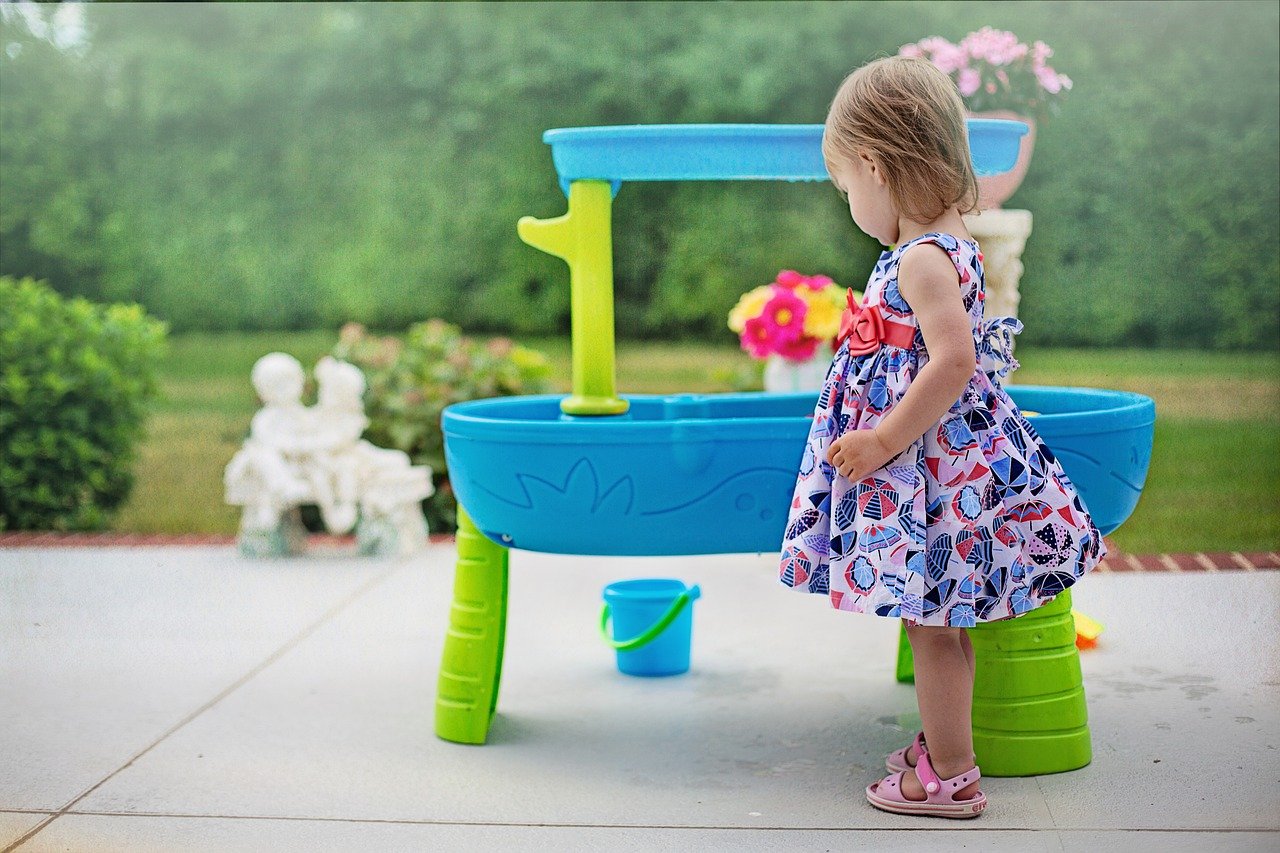
Choosing the Right Environment
When it comes to helping your pet overcome their fear of water, the environment you choose can make all the difference. Imagine trying to relax in a crowded, noisy place—it's nearly impossible! Similarly, pets need a calm and inviting space to feel secure while they explore water. The right environment not only boosts their confidence but also sets the stage for a positive experience.
First and foremost, consider the location. A quiet, shallow area is ideal for pets who are hesitant about water. Think of a small, calm pond or a gentle stream. Avoid busy public beaches or chaotic swimming pools where loud noises and unfamiliar scents can overwhelm them. Instead, look for spots where they can wade in slowly, allowing them to acclimate at their own pace.
Additionally, the temperature of the water plays a crucial role. Cold water can be shocking and uncomfortable, making it harder for your pet to relax. Aim for warm, temperate water that feels soothing. If you're using a kiddie pool in your backyard, fill it with lukewarm water to create a comfortable environment. This will help your pet associate water with positive feelings rather than discomfort.
Another vital aspect is the surroundings. A tranquil setting with minimal distractions will help your pet focus on the task at hand—getting comfortable with water. Look for areas that are free from heavy foot traffic, loud machinery, or other pets that might create anxiety. Consider bringing along a favorite blanket or toy to provide a sense of familiarity and security.
Finally, don’t underestimate the power of positive reinforcement. As your pet explores their new environment, shower them with praise and treats. This will help them build a positive connection with water and the space around it. Remember, patience is key; every little step counts, and creating a safe haven for your pet is essential in overcoming their fears.
- What if my pet refuses to go near water? - It's important to remain patient and not force them. Gradual exposure is key.
- How can I tell if my pet is comfortable in the water? - Look for relaxed body language, such as a wagging tail or playful behavior.
- Can I use a leash while introducing my pet to water? - Yes, using a leash can help you maintain control, but ensure it doesn’t restrict their movement too much.
- What types of water activities can I do at home? - You can try filling a bathtub or kiddie pool with water and gradually introducing toys or treats.
Safe Water Bodies
When it comes to introducing your pet to water, the environment is everything. Choosing the right water body can make a world of difference in how your furry friend perceives water. Some pets may feel more at ease in calm, shallow areas, while others might thrive in larger, more open spaces. The key is to find a spot that feels safe and inviting for your pet, allowing them to explore at their own pace.
Consider starting with natural bodies of water such as lakes or ponds. These locations typically have gentle slopes and are less intimidating than rushing rivers or deep ocean waters. Look for areas with a sandy or grassy shoreline where your pet can gradually wade in without feeling overwhelmed. Additionally, ensure that the water is clean and free from debris or strong currents, as these factors can add to your pet's anxiety.
Another option is man-made water features like kiddie pools or water play areas designed specifically for pets. These controlled environments allow for a more manageable introduction to water without the unpredictability of natural settings. You can fill a kiddie pool with just a few inches of water, making it easy for your pet to step in and out as they please. This setup also allows you to incorporate toys and treats, further enhancing the positive experience.
Here’s a quick comparison of safe water bodies you might consider:
| Type of Water Body | Pros | Cons |
|---|---|---|
| Natural Lakes | Shallow areas, calm waters, natural environment | Possible wildlife, varying depths |
| Ponds | Quiet, often shallow, easy access | Debris, algae growth |
| Kiddie Pools | Controlled environment, easy to clean | Limited space, can get hot in the sun |
| Dog-Friendly Beaches | Social interaction, fun atmosphere | Can be crowded, waves may be intimidating |
Ultimately, the best choice depends on your pet's personality and comfort level. Always observe their reactions and be prepared to adjust your plans if they seem uneasy. The goal is to create a positive association with water, and the right environment can significantly contribute to that. By selecting safe water bodies and allowing your pet to explore at their own pace, you're setting the stage for a successful and enjoyable experience.
- How do I know if my pet is ready for water exposure? Look for signs of curiosity or playfulness around water. If they seem hesitant, take it slow.
- What should I bring for our first water outing? Bring plenty of treats, toys, and fresh water to keep your pet hydrated.
- Can all pets learn to enjoy water? While many pets can learn to enjoy water, some may always prefer to stay dry. It's important to respect their preferences.
- Should I use a leash during water introduction? Yes, using a leash can help you maintain control and ensure your pet feels secure.
Home Water Activities
When it comes to helping your furry friend overcome their fear of water, engaging in can be a game changer. These activities not only provide a safe and controlled environment but also allow for bonding time between you and your pet. Imagine transforming your backyard or even your bathroom into a mini water park, where your pet can explore and play without the overwhelming pressure of larger bodies of water.
One of the simplest ways to start is by using a kiddie pool. Fill it with just a few inches of water and let your pet investigate at their own pace. You can toss in some floating toys or even their favorite ball to spark their curiosity. The key is to allow them to approach the water when they're ready. If they seem hesitant, don’t push them; instead, encourage them with gentle words and perhaps a treat or two. This creates a positive association with the water.
Another fun activity is to use a sprinkler or a gentle hose spray. Set it to a low setting and let the water dance around. Most pets are naturally curious and will likely want to investigate the moving water. Just be sure to monitor their reactions closely. If they seem frightened, turn off the water and try again later. You can also create a water obstacle course in your backyard, where your pet can jump over small puddles or navigate through wet grass. This way, they can build confidence while having a blast!
Additionally, consider incorporating water games into your routine. For example, you can fill a shallow basin with water and float some toys inside. Encourage your pet to retrieve them. This not only makes the experience playful but also reinforces their comfort level with water. If your pet enjoys fetch, you can play a similar game by throwing toys into the water and coaxing them to go get it. Just remember, patience is key! It’s important to celebrate small victories, whether it’s just dipping a paw in or splashing around excitedly.
Lastly, always keep safety in mind. Ensure that the area where you're conducting these activities is free from hazards. Supervise your pet closely, especially during their initial experiences with water. If they show signs of distress, it’s crucial to step back and give them some space. Over time, with consistent and positive experiences, your pet will likely grow to love water, transforming their fear into joy.
- How long should I spend on water activities with my pet? It's best to start with short sessions of about 10-15 minutes, gradually increasing the time as your pet becomes more comfortable.
- What if my pet doesn’t seem interested in water? Try different activities and environments. Some pets may prefer a calm setting, while others might enjoy a more playful atmosphere.
- Can I use treats to encourage my pet? Absolutely! Treats can be a great motivator. Just ensure they’re safe and appropriate for your pet.
- What signs indicate my pet is stressed? Look for signs like panting, whining, or trying to escape. If you notice these, take a break and try again later.
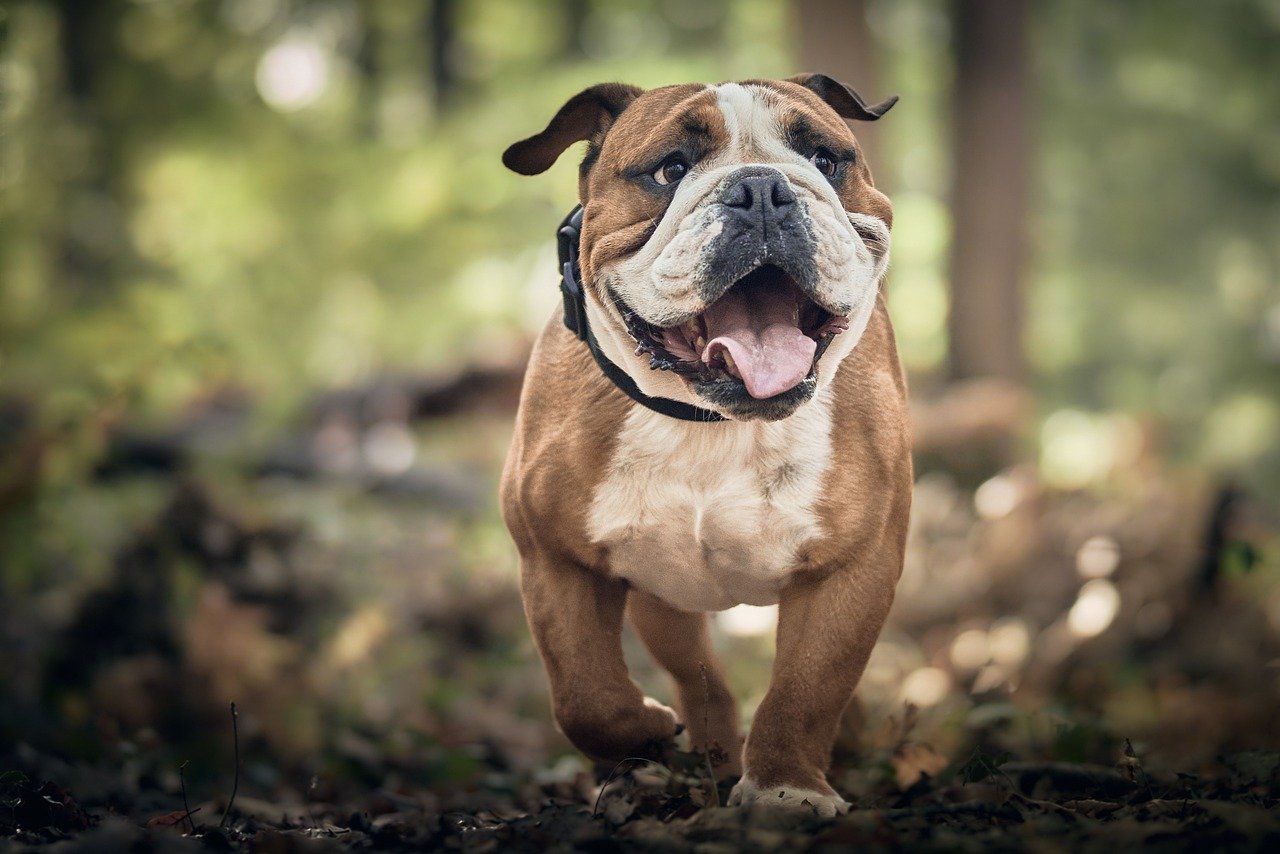
Seeking Professional Help
Sometimes, despite our best efforts, our beloved pets may still struggle with their fear of water. If you've tried various techniques and your furry friend is still shaking at the mere sight of a puddle, it might be time to consider . Professional trainers and behaviorists possess the expertise to identify the root causes of your pet's anxiety and can tailor a specific plan that addresses their unique needs. Just like humans, pets can have deep-seated fears that require a specialized approach to overcome.
When contemplating professional assistance, it's important to look for trainers who have experience with water-related fears. They often use positive reinforcement strategies to help pets associate water with enjoyable experiences. This method not only helps to alleviate fear but also strengthens the bond between you and your pet. You might wonder, "How do I know when it's time to call in a professional?" Here are a few signs:
- Your pet exhibits extreme anxiety or panic at the sight of water.
- Attempts at desensitization have resulted in increased fear or aggression.
- You've exhausted all your resources and techniques without success.
- Your pet's fear is affecting their quality of life or daily activities.
By consulting with a professional, you open the door to new techniques and insights that you may not have considered. Many trainers utilize methods such as counter-conditioning and desensitization, which can be incredibly effective in helping pets overcome their fears. These methods often involve gradually exposing your pet to water in a controlled and safe manner while simultaneously providing rewards and positive reinforcement.
Moreover, a professional can help you understand your pet's body language during water exposure, allowing you to respond appropriately to their needs. This understanding is vital because every pet is different; what works for one may not work for another. By tailoring the approach to your pet's specific fears and behaviors, you can ensure a more effective and compassionate journey towards overcoming their anxiety.
In conclusion, while it can be disheartening to see your pet struggle with their fear of water, remember that help is available. Seeking professional guidance can be a game-changer, offering both you and your pet the support needed to navigate this challenge together. After all, it's all about creating a safe, enjoyable, and loving environment for your furry companion.
Here are some common questions pet owners have when considering professional help for their pets' fear of water:
- How do I find a qualified trainer? Look for trainers who specialize in behavior modification and have experience with water-related fears. Check reviews and ask for recommendations from fellow pet owners.
- What should I expect in a training session? Expect a calm, controlled environment where the trainer will assess your pet's behavior and develop a tailored plan for gradual exposure to water.
- Will my pet's fear ever completely go away? While some pets may overcome their fear entirely, others may learn to manage their anxiety. The goal is to help your pet feel more comfortable and less stressed around water.
Frequently Asked Questions
- What causes my pet to fear water?
Pets can develop a fear of water for various reasons, including past traumatic experiences, lack of exposure, or even genetics. Understanding these factors can help you empathize with your furry friend and find effective ways to support them.
- How can I gradually introduce my pet to water?
Start by allowing your pet to explore water in a controlled environment. Begin with shallow water and let them approach it at their own pace. Gradually increase their exposure, ensuring each step feels safe and comfortable for them.
- What are some positive reinforcement techniques I can use?
Using treats, praise, and toys can create positive associations with water. Whenever your pet shows curiosity or takes a step closer to the water, reward them immediately to reinforce their bravery.
- Are there specific toys that can help my pet enjoy water?
Absolutely! Floating toys, water-friendly balls, and even splash pads can make water play more engaging. Choose items that your pet loves to encourage them to interact with water in a fun way.
- How can I tell if my pet is stressed during water exposure?
Watch for signs like panting, whining, or attempting to escape. If you notice these behaviors, it’s essential to take a step back and give your pet some space to calm down before trying again.
- What is the best environment to introduce my pet to water?
Look for calm, shallow areas that are free from strong currents or loud noises. A quiet backyard pool or a gentle stream can provide a safe and inviting atmosphere for your pet's first water experiences.
- Can I help my pet get used to water at home?
Yes! You can create a fun water experience at home with a kiddie pool, a bathtub, or even a hose on a gentle spray setting. Just make sure it’s a stress-free environment where your pet feels secure.
- When should I seek professional help for my pet's water anxiety?
If your pet shows extreme fear or panic that doesn't improve with gradual exposure, it may be time to consult a professional trainer or animal behaviorist. They can provide tailored strategies to help your pet overcome their fear.

